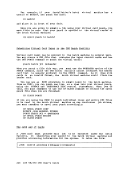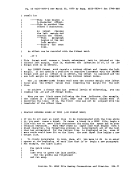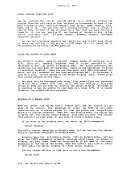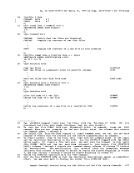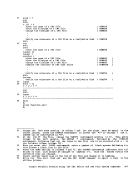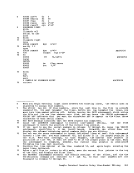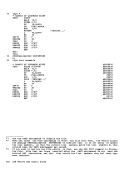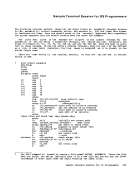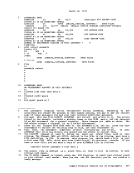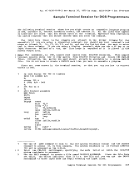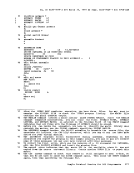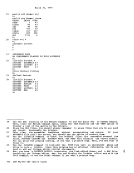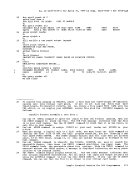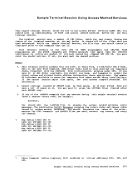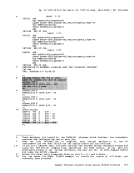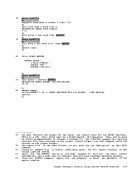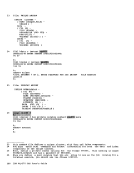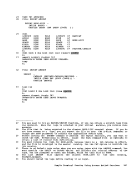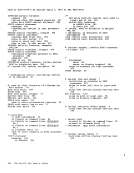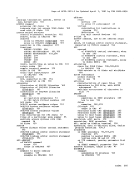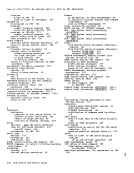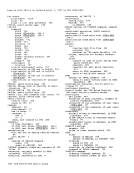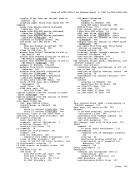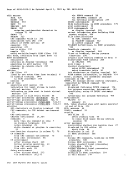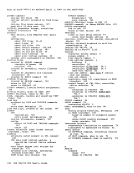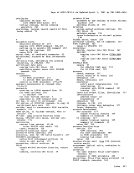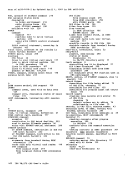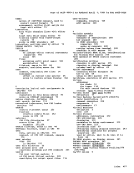This final UPDATE co •• and produces the file $$$FICA PLIOPT, which is now
the fully updated source file. This method is cumbersome, however,
particularly if you havemany updates to apply and they must be applied
in a particular order. Therefore, theUPDATE command provides a multilevel update scheme, which you can use to apply many updates at one
time, in a specified order.
To apply multilevel updates,you must have"a control file, which by
convention has a filetype of CNTRL and a filename that is the same as
the source input file. Therefore, to apply the three update files to
FICAPLIOPT, you should create a file named FICA CNTRL.
A control file is actually a list: it does not contain any actual update
control statements (INSERT, DELETE, and so on), but rather it indicates
what update files should be applied, and in what order. In the case of
a multilevel update, all the update files must have thesame filename as
the source file. Therefore, only the
control file to uniquely identify the update file. In fact, if all your
update files have filetypes beginning with the charactersUPDT, you need
only specify the unique part of the filetype. The control file forPICA PLIOPT, named PICA CNTRL, may typically look like the following: TEXT MACS PLILIB PICA3 UP3 PICA2 UP2 PICA1 UP1 The first record in the control file must be a MACS record. The
second field in this recordmust be "KACS," and it may be followed by up
to eight macro library names. Every record in the control filemust have an "update level identifier;" in this example, the update level
identifiers areTEXT on the MACS record, FICA1 for the UP1 record, and
so on. The update level identifiermay have a maximum of five
characters.
TheUPDATE command only uses the MACS identifier under special circumstances.
under"VMFASM EXEC Procedure." Por nov,
these things must be in a control file in
to execute properly.
record and the update level
These are described later,you only need to know that
order for theUPDATE command
To updatePICA PLIOPT, then, you vould issue the UPDATE command as
follows:
update fica pliopt (ctlWhen you use the CTL option, and you do not specify the name of a
control file, theUPDATE command looks for a control file with the
filetype of CNTRL and a filename that is the same as the source file.
From the control file, it reads the filetypes of the updates to be
applied. In this example, it searches for the file FICAUPDTUPl and if
found, applies the updates; thenUPDATE searches for FICA UPDTUP2, and
applies those updates, if any. Last it searches for FICAUPDTUP3, and
applies those updates.
Notice that the updates are applied from the bottom of the control
file, toward the top. This becomes important when an update is
dependent on a previous update. For example, if you add some lines to a
file inPICA UPDTUP1, then modify one of those lines in FICA UPDTUP2, it
is important thatUPDTUP1 vas applied first.
258IBM VM/370 CMS User's Guide
the fully updated source file. This method is cumbersome, however,
particularly if you have
in a particular order. Therefore, the
time, in a specified order.
To apply multilevel updates,
convention has a filetype of CNTRL and a filename that is the same as
the source input file. Therefore, to apply the three update files to
FICA
A control file is actually a list: it does not contain any actual update
control statements (INSERT, DELETE, and so on), but rather it indicates
what update files should be applied, and in what order. In the case of
a multilevel update, all the update files must have the
the source file. Therefore, only the
control file to uniquely identify the update file. In fact, if all your
update files have filetypes beginning with the characters
only specify the unique part of the filetype. The control file for
second field in this record
to eight macro library names. Every record in the control file
identifiers are
so on. The update level identifier
characters.
The
under
these things must be in a control file in
to execute properly.
record and the update level
These are described later,
order for the
To update
follows:
update fica pliopt (ctl
control file, the
filetype of CNTRL and a filename that is the same as the source file.
From the control file, it reads the filetypes of the updates to be
applied. In this example, it searches for the file FICA
found, applies the updates; then
applies those updates, if any. Last it searches for FICA
applies those updates.
Notice that the updates are applied from the bottom of the control
file, toward the top. This becomes important when an update is
dependent on a previous update. For example, if you add some lines to a
file in
is important that
258

































































































































































































































































































